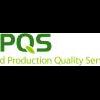I have a dilema here and hope that some would be able to offer opinions.
Say we have a plant that produces sterilized canned and UHT vegetable-based products. HACCP system was established and implemented.
Then the plant started a new line on sterilized canned meat-based products, which has effluent of washing and blanching water. But the drain is covered at situated on the external part of the building.
Both line share the same premise but not the same line or same equipment. The only exception is that both line would share the same equipment for the process step of sealing of the can, retorting, cooling and labelling of the can. There could be only one line running each time, the veg-based line could not run concurrently with the meat-based line.
I understand that the microbial flora would be different between the two lines, but in this situation, how high would be the risk of one cross-contaminating the other? Would the risk be so high that the vege-based line would be greatly affected? Would it be adequate if we review the Hazard analysis of the vege-based line and includes the meat microbial flora as hazards, as well as control measures?? Would it be adequate if we sanitized the equipment (can sealer, cooling tank) between the process lines?
Would the risk of the effluent cross-contaminating the vege-based line be high when the drain is actually outside of the building mostly covered?
Appreciate help, any help. ![]()
![]()
Thanx and Cheers,
- Home
- Sponsors
- Forums
- Members ˅
- Resources ˅
- Files
- FAQ ˅
- Jobs
-
Webinars ˅
- Upcoming Food Safety Fridays
- Recorded Food Safety Fridays
- Upcoming Hot Topics from Sponsors
- Recorded Hot Topics from Sponsors
- Food Safety Live 2013
- Food Safety Live 2014
- Food Safety Live 2015
- Food Safety Live 2016
- Food Safety Live 2017
- Food Safety Live 2018
- Food Safety Live 2019
- Food Safety Live 2020
- Food Safety Live 2021
- Training ˅
- Links
- Store ˅
- More
















